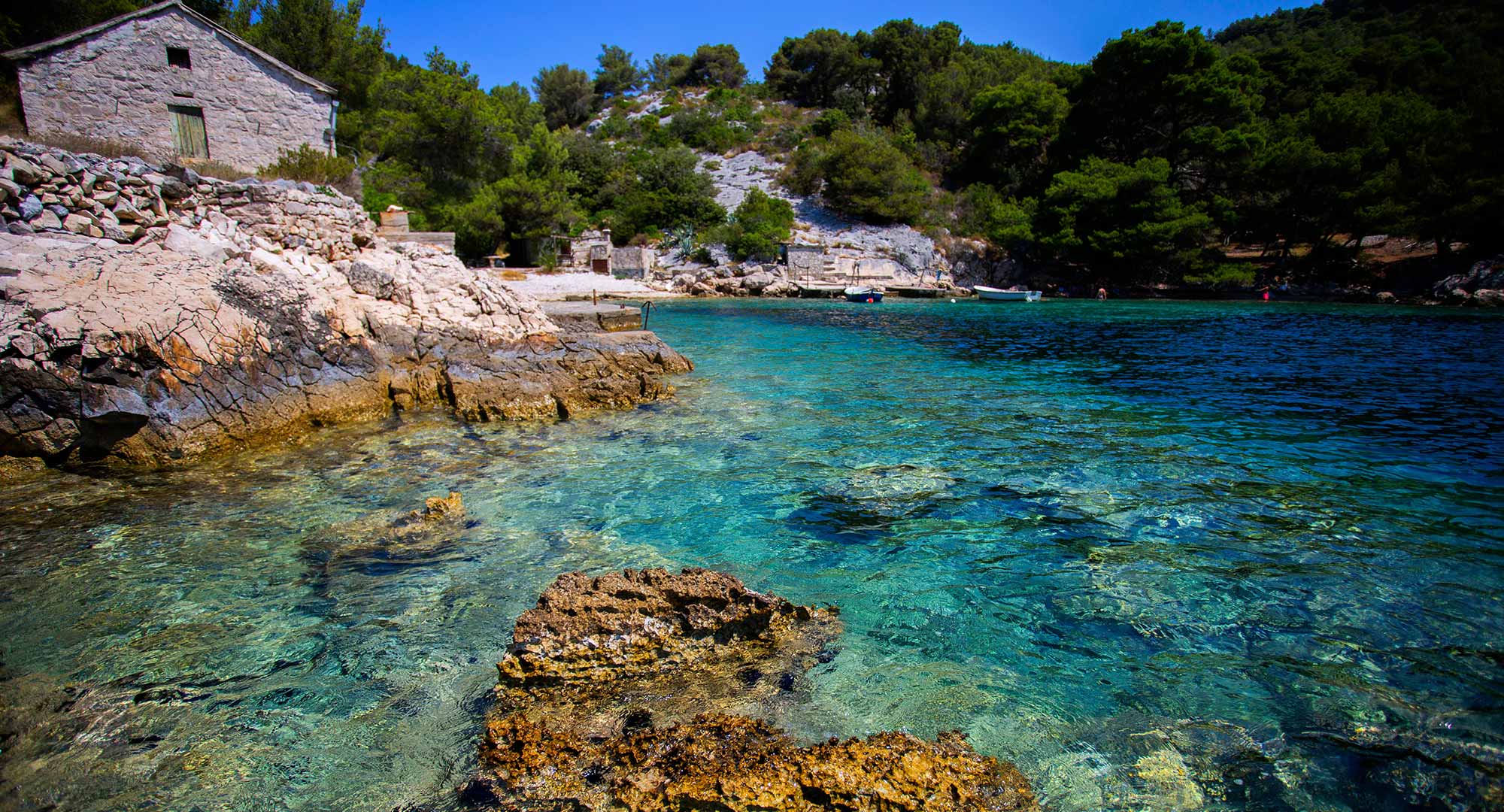The first mention of the name ‘Šolta’ dates back to the 4th century BC, by the Greeks. They originally named the island Olynta, which was later adapted into Solinta or Solentia by the Romans, before it came to be known by its current name of Šolta. The first evidence of inhabitation can be traced back to the Illyrian era, though it is believed the island had been inhabited long before this.
Šolta was the favoured residence of the Roman Emperor Diocletian, and in 295 AD he built his own fishpond here, in Piškera Bay. The remains of it are still visible under the Adriatic Sea. In the same part of the island you’ll also find the remains of a Roman villa rustica; a countryside villa occupied by Roman landowners. Further remains of villa rusticae can be found on the island near Donje Selo, Rogač and Gornje Selo.

According to legend, the Illyrian Queen Teuta used to have a castle on Šolta. Its remains can still be seen today on the hill overlooking Senjska Bay. It was called Mir – which translates to Peace – and is said to have been a place where people could go to find inner peace and strength.
Queen Teuta was a famous Illyrian queen and her legend lives on to this day. When local fisherman want to ask the queen something, or to simply honour her memory, they return their first catch of the day back into the sea beneath her old castle.
Throughout Šolta you will often see the remains of old stone houses like the one you can see in the image. These houses are called bunje, and are where locals used to have their fields. They used the bunje as a place to keep their tools and as a shelter from the rain. Interestingly, these houses can be found all over the world, suggesting they were a typical settlement from the prehistoric ages.

The evidence of Roman occupation is visible through Šolta. One example is the villa rusticae that you'll find in Donje Selo, Rogač, Gornje Selo and Piškera Bay. The term villa rustica can be roughly translated to countryside villa, and was the home of a Roman landowner. The landowner lived in the main house which was surrounded by agricultural and farming areas.

Back in the 3rd century AD, the Roman Emperor Diocletian started fish farming in the coves of the island of Šolta to help feed the legions who looked after his retirement home. Emperor Diocletian was a notable emperor who, having been born into a low-status family in Dalmatia, went on to save the Roman Empire from the brink of collapse.
The story goes that Diocletian's favourite place for fishing was Piškera Bay in Nečujam, which is in the northern part of Šolta. Nečujam translates to "deaf,” since each sound here converts into a whisper. Nečujam is beautiful, green and above all, quiet where you can find medicinal mud. Of excellent quality, the Šoltan black mud helps with bone pain, extracts excess water from the body, gives the skin nutrient minerals, and is ideal as a natural face lift. The untouched Šoltan nature offers numerous opportunities for the development of various aspects of tourism, and one of them is complementary medicine.
With amazing local produce, clear blue seas and astonishing natural beauty, it’s easy to see why Piškera Bay was Diocletian’s favourite fishing spot. The remains of this ancient fishpond are still visible under the sea.
Just up the hill from the port of Rogač you will find Grohote; the oldest and largest settlement on the island of Šolta. Grohote is home to Slavića kaštel (Slavica Castle), which was owned by the noble Slavić family of Split.
The castle was built in three different phases. It was originally constructed as a three-storey tower to protect the village from pirate raids, before another storey was added to bolster the castle’s defences. In the 19th century it was converted into residential housing, and nowadays it acts as the main offices for the Municipality of Šolta. Cultural events and shows are often hosted in the castle’s large courtyard.
Across the sea, in Split, you will find Diocletian’s Palace. It is just a 20-minute boat ride from Šolta and is regarded as one of the best-preserved monuments from the Roman era.
Diocletian was a Roman emperor who rose from a low-status family to eventually save the Roman empire from the brink of collapse. He was the only Roman emperor to voluntarily retire. After his retirement, he moved into his palace in Split and spent the rest of his days gardening and growing vegetables here.
His palace in Split is divided into four parts with two main streets running through it. It is comprised of a luxury villa, summer house and Roman military camp, known as a castrum.